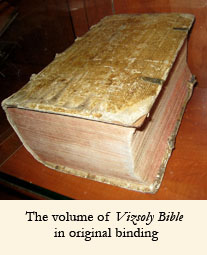Early Hungarian art stemmed from many of the traditions of
Prince Árpád and the people of the Carpathian Basin. The most widely known
style of art at the time Hungary was first established was the highly
ornamental motif. They could be found in a number of places: around doorframes,
decorative borders on scrolls, but mostly on clothing and decorations on their
horses. It looked similar to Scandinavian or Celtic styles.
Architecture in Medieval Hungary mimicked several of the
main European styles of the day. Certainly after the Mongols came and destroyed
many Hungarian cities, there was a great reconstruction period. However, there are a few Romanesque and
Gothic style buildings still standing from this era (mostly churches).
The Renaissance brought along new styles in painting,
sculpting, and architecture. Goldwork also began to become an important
industry with the minting of coins and jewelry making. The Ottomans also had
their influences on Hungarian art. Around this time, the use of what’s called a
“cassette” became popular in architecture. (No, not like a cassette tape, as in
the first cassette tape I saved up my money and bought myself was Bette
Midler’s Some People’s Lives album.
Look, it was 1990.) A cassette in architecture is like a highly decorated tile
that goes on the ceiling. I think they’re awesome and would really like to do a
room in my house with cassettes like this.
Hungarian literature is primarily written in Hungarian,
although early literature was written in Latin. Before Latin was introduced by Stephen I around 1000AD, the
people wrote in a runic script. It wasn’t used in any form of literature as we
know it; it was mostly used in historical accounts. The earliest forms of
Hungarian were in the form of a funeral rite and an epic poem. However, written
Hungarian before the use of diacritical marks is difficult to read even for
modern Hungarians. The first Hungarian translation of the Bible was created in
the 15th century.
The Renaissance and the Baroque brought along important
changes and pieces of Hungarian literature. During this time, the Hungarians fell under the rule of the
Ottomans. Poetry became very
important and several poets grew to prominence. Most of the poems emerging from
this time were love poems, religious poems, or war poems. Historical works were
also still booming as well.
 |
| Imre Kertész |
The 19th and 20th centuries pushed
Hungarian literature to the eyes of the world. These writers started to become
noticed on a global scale. Some of
the more well-known Hungarian writers to emerge during this time were Mór Jókai
(dramatist, novelist, shares the same birthday with my husband), Antal Szerb
(writer and scholar, one of the more important names of 20th century
Hungarian writers), Sándor Márai (journalist, novelist, poet), Imre Kertész
(novelist, survivor of a Holocaust concentration camp, winner of the 2002 Nobel
Prize for Literature), and Magda Szabó (important Hungarian novelist, essayist,
dramatist, poet).
Up next: music and dance



No comments:
Post a Comment